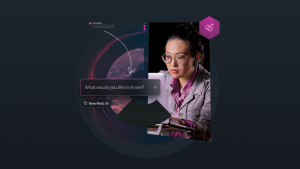At FutureStack 2021, our largest event of the year, we launched a ton of awesome products and features (read the full recap here). On this week’s Nerdlog, we took some time to recap one of the innovations we released at FutureStack: Next-Gen AIOps.
Making data-driven decisions and delivering intelligent experiences that are guided, proactive, and faster than ever before is hard. That’s why Next-Gen AIOps empowers you to detect, diagnose, and mitigate issues so that you can meet those demands and expectations.
With Next-Gen AIOps, you can detect anomalies on nearly anything in New Relic in just a few clicks using expanded anomaly detection. Additionally, you can use dynamic baselines that adjust violation thresholds based on behavioral data for intelligent alerting on all your hosts and services. You can also configure alerts in context from a chart or use NRQL queries.
Visualize entity relationships, assess the scope of an issue, and identify other entities that may be affected using issue maps. Get more detailed information into incident details that make up an issue with incident analysis and understand your team’s behavior with relevant dashboards powered by machine learning.
We know this is a ton of information. To ensure you fully understand how all of this recent innovation works together to help you quickly and intelligently respond to incidents and increase great customer experiences, Nate Heinrich, Principal Product Manager at New Relic, breaks it all down in the latest Nerdlog episode below:
Étapes suivantes
Filter using the “AIOps” and “Alerts” tags to watch on demand FutureStack sessions about Next-Gen AIOps. Learn more about AIOps here.
Subscribe to our Nerdlog emails to get weekly updates about the latest features and releases from the people who built them. Join the Nerdlog discussion live every Thursday at 12 p.m. PT (8 p.m. UTC) on Twitch or follow along in What’s New. To experience all the FutureStack observability innovation for yourself, sign up for a free New Relic account.
Les opinions exprimées sur ce blog sont celles de l'auteur et ne reflètent pas nécessairement celles de New Relic. Toutes les solutions proposées par l'auteur sont spécifiques à l'environnement et ne font pas partie des solutions commerciales ou du support proposés par New Relic. Veuillez nous rejoindre exclusivement sur l'Explorers Hub (discuss.newrelic.com) pour toute question et assistance concernant cet article de blog. Ce blog peut contenir des liens vers du contenu de sites tiers. En fournissant de tels liens, New Relic n'adopte, ne garantit, n'approuve ou n'approuve pas les informations, vues ou produits disponibles sur ces sites.



